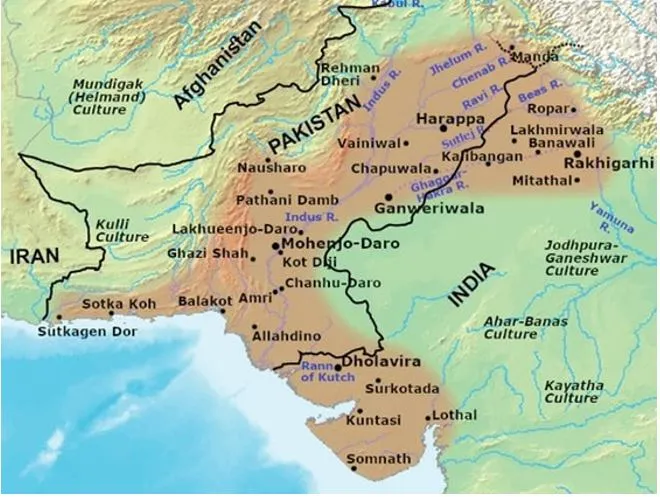

08th January 2025 (14 Topics)
Context
The Tamil Nadu government has announced a reward of USD 1 million (Rs 8.5 crore) to anyone who can successfully decipher the script of the Indus Valley Civilisation (IVC).
About Indus Valley Civilisation (IVC)
- The Indus Valley Civilisation (IVC) was a Bronze Age civilizationin the northwestern regions of South Asia.
- It lasted from 3300 BCE to 1300 BCE, and in its mature form from 2600 BCE to 1900 BCE.
- Together with ancient Egypt and Mesopotamia, it was one of three early civilizations of the Near East and South Asia.
- Its sites spanning an area stretching from northeast Afghanistan, through much of Pakistan, and into western and northwestern India.
- It flourished in the basins of the Indus River. Its major cities were Harappa and Mohenjodaro, which housed thousands of inhabitants.
- The Indus civilization is also known as the Harappan Civilisation, after its type site, Harappa, the first of its sites to be excavated early in the 20th century.
- The civilisation was officially discovered in 1921 by John Marshall, director of the Indian Archaeological Survey.
- Despite its vast size and importance, much about the IVC remains a mystery, including the undeciphered script.
- The Indus Script: The IVC script appears on various artefacts like seal stones, terracotta tablets, and metal objects. These inscriptions feature pictograms, often accompanied by motifs of animals or humans.
- Decoding Efforts: Over the past century, more than 100 attempts have been made by linguists, archaeologists, and scientists to decode this script. However, no breakthrough has been made, leaving the language of the Indus Valley as one of the most enduring mysteries of ancient civilisations.
The Dravidian Connection:
- Politicians in Tamil Nadu, particularly those from the Dravidian movement, have long claimed that the people of the IVC could be the ancestors of Tamils. The Indus script might represent an early form of Dravidian language, though evidence for this is limited.
- Dravidian Symbols: The presence of bulls in the Indus Valley seems to point out that bulls are a key symbol in Dravidian culture, especially in Tamil Nadu. There might be a connection between the symbolism of bulls in the IVC and the cultural practices in Tamil Nadu, such as the traditional practice of jallikattu (bull taming).
- The Tamil Nadu State Department of Archaeology’s recent findings suggest that many of the signs and motifs unearthed in Tamil Nadu resemble those found in the IVC. According to their study, 60% of signs and 90% of drawings found in Tamil Nadu bear similarities to the IVC symbols, suggesting a possible cultural link.
- The origin of the IVC and its relationship to later civilisations, especially the Aryan migration theory, is a highly contentious issue.
More Articles



